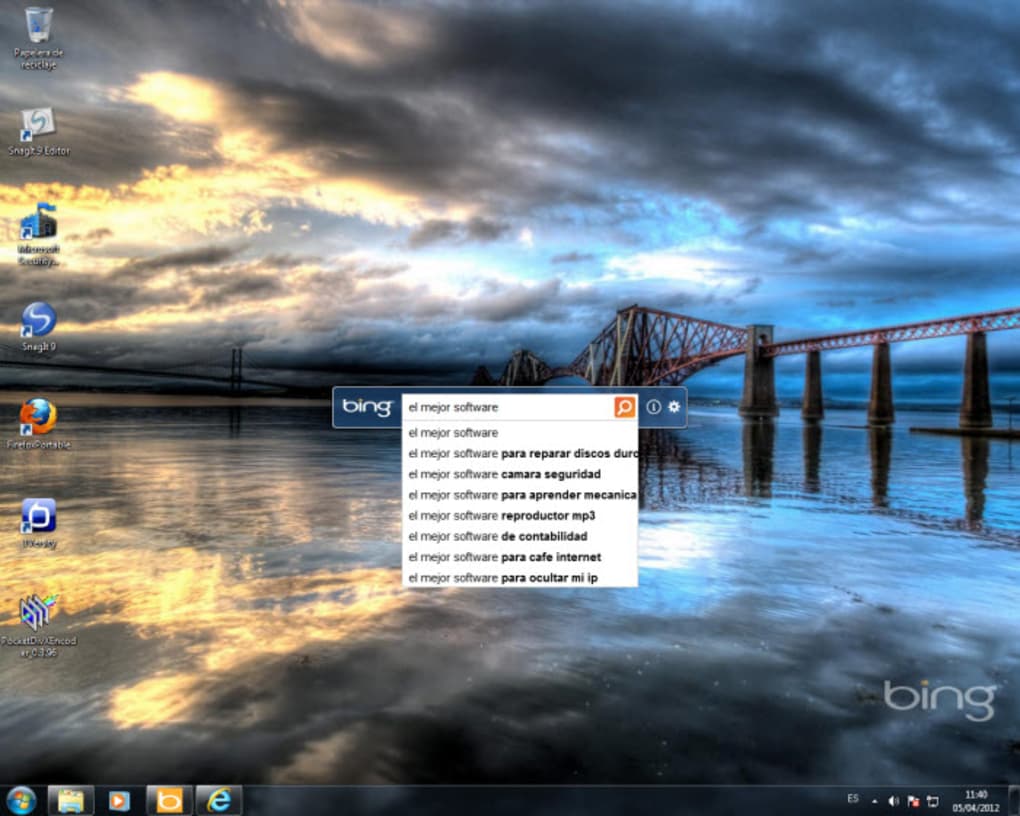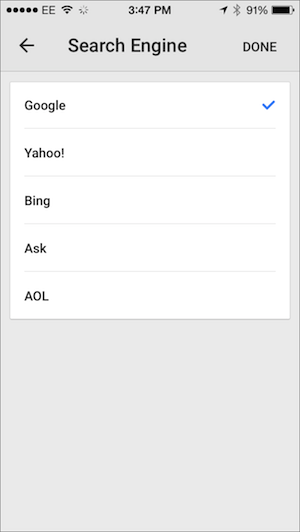How to remove bing.com browser hijacker from Mac? What is bing.com?
Bing.com is a well known, legitimate web search engine owned by Microsoft and is not associated with any viruses, malware and so on. Nevertheless, there are many browser hijackers, potentially unwanted applications (PUAs) that promote it in order to create an impression of their legitimacy. Typically, users install apps of this type unintentionally. Once installed, browser-hijacking apps modify browser's settings and often deliver various ads, and collect data related to users browsing activity.
Most browser-hijacking apps target popular web browsers such as Mozilla Firefox, Google Chrome and Internet Explorer. When installed, they stealthily change default search engine, homepage and new tab URL, in this case to bing.com. Some unwanted apps of this type even add a URL extension to the shortcut targets of each affected browser.
Yahoo App For Mac Desktop
All these changes, once made, mean that users are forced to visit bing.com every time they open a new tab in a web browser or the browser itself and attempt to search the web. Another downside of having a browser hijacked by such unwanted apps is that they often get installed together with so called 'helper objects'. These usually are installed as extensions, plug-ins or add-ons and are designed to prevent users from changing the settings assigned by browser hijackers. In other words, 'helper objects' reassign the appointed settings the second and attempt to change them is made. Being redirected to bing.com will not do any harm (pose threats to browsing safety, privacy etc.), however, browser hijackers might, no matter if the promoted search engine is legitimate or not.
Moreover, these unwanted apps often feed users with various intrusive advertisements (pop-ups, banners, coupons, surveys and so on) that usually conceal the underlying content of any website. Besides, if clicked, they might redirect to untrustworthy, deceptive websites. Being redirected to such websites might result in installations of adware or even malware.
Another downside of browser-hijacking PUAs is that most of them are designed to gather browsing-related data (IP addresses, search queries, URLs of visited websites, geo-locations etc.). Their developers collect it continuously and then share it with third parties (potentially, cyber criminals). It is possible that some of the collected dada might include personal data too. Data tracking apps might cause various privacy of browsing safety issues.
We recommend to uninstall any unwanted, unknown apps from web browsers as soon as possible. Free scanner checks if your computer is infected. To remove malware, you have to purchase the full version of Spyhunter.
Bing Desktop App For Mac
Typically, most PUAs of this type (browser hijackers) are promoted as applications that are capable of providing their users with some useful tools or features. However, these are only attempts of their developers to trick people into downloading/installing them. As a rule, such apps are designed only to generate revenue for their developers and do not deliver any real value (promised usefulness) for their users. Here are some examples of other websites promoted by browser hijackers:,. How did bing.com install on my computer? In most cases browser hijackers infiltrate systems without a direct permission, they get installed when software developers use a deceptive marketing method called 'bundling', or through other (clicked) intrusive advertisements. Bundling is a method used to trick users into installing unwanted apps (such as browser hijackers) together with some regular software.
Software developers hide these apps in 'Custom', 'Advanced' and other options/settings of the installation/download processes. Developers usually do not disclose information about additionally included apps properly. There are many users who skip the installation or download step without checking any of the settings and that is how most of inadvertent installations happen. How to avoid installation of potentially unwanted applications? Be careful when browsing the web and installing or/and downloading various software, especially freeware (free software). Do not download apps from unofficial websites, using third party software downloaders/installers or other similar sources. Always check all the available 'Custom', 'Advanced' and other settings/options when installing or downloading any software.
Deselect all offers to download or install various apps, change browser settings and so on, and only then complete the process. Be careful with ads displayed on dubious, questionable websites. Clicking such ads might cause redirects to various unwanted/untrustworthy websites. If you are being constantly redirected to pornography, gambling, adult dating or other suspicious websites, check the list of installed applications/browser plug-ins, add-ons or extensions and remove any suspicious entries immediately.
Same applies to the programs installed on your operating system. If your computer is already infected with browser hijackers, we recommend running a scan with to automatically eliminate them. Example of a browser-hijacking software installer that promotes bing.com: Instant automatic removal of browser-hijacking applications: Manual threat removal might be a lengthy and complicated process that requires advanced computer skills. Spyhunter is a professional automatic malware removal tool that is recommended to get rid of browser-hijacking applications. Download it by clicking the button below: By downloading any software listed on this website you agree to our. Free scanner checks if your computer is infected. To remove malware, you have to purchase the full version of Spyhunter.
Quick menu:. STEP 1. Video showing how to remove browser redirects to bing.com using Combo Cleaner. Free scanner checks if your computer is infected.
To remove malware, you have to purchase the full version of Spyhunter. Remove browser-hijacking applications related files and folders: Click the Finder icon, from the menu bar, choose Go, and click Go to Folder. Check for adware-generated files in the /Library/LaunchAgents folder: In the Go to Folder. Bar, type: /Library/LaunchAgents In the “ LaunchAgents” folder, look for any recently-added suspicious files and move them to the Trash.
Examples of files generated by adware - “ installmac.AppRemoval.plist”, “ myppes.download.plist”, “ mykotlerino.ltvbit.plist”, “ kuklorest.update.plist”, etc. Adware commonly installs several files with the same string. Check for adware-generated files in the /Library/Application Support folder: In the Go to Folder. Bar, type: /Library/Application Support In the “ Application Support” folder, look for any recently-added suspicious folders. For example, “ MplayerX” or “ NicePlayer”, and move these folders to the Trash. Check for adware-generated files in the /Library/LaunchAgents folder: In the Go to Folder bar, type: /Library/LaunchAgents In the “ LaunchAgents” folder, look for any recently-added suspicious files and move them to the Trash.


Examples of files generated by adware - “ installmac.AppRemoval.plist”, “ myppes.download.plist”, “ mykotlerino.ltvbit.plist”, “ kuklorest.update.plist”, etc. Adware commonly installs several files with the same string. Check for adware-generated files in the /Library/LaunchDaemons folder: In the Go to Folder. Bar, type: /Library/LaunchDaemons In the “ LaunchDaemons” folder, look for recently-added suspicious files. For example, “ com.aoudad.net-preferences.plist”, “ com.myppes.net-preferences.plist”, ' com.kuklorest.net-preferences.plist”, “ com.avickUpd.plist”, etc., and move them to the Trash.
Scan your Mac with Combo Cleaner: If you have followed all the steps in the correct order you Mac should be clean of infections. To be sure your system is not infected run a scan with Combo Cleaner Antivirus. After downloading the file double click combocleaner.dmg installer, in the opened window drag and drop Combo Cleaner icon on top of the Applications icon. Now open your launchpad and click on the Combo Cleaner icon.
Wait until Combo Cleaner updates it's virus definition database and click 'Start Combo Scan' button. Combo Cleaner will scan your Mac for malware infections. If the antivirus scan displays 'no threats found' - this means that you can continue with the removal guide, otherwise it's recommended to remove any found infections before continuing. After removing files and folders generated by the adware, continue to remove rogue extensions from your Internet browsers. Browser-hijacking applications homepage and default Internet search engine removal from Internet browsers: Remove malicious extensions from Safari: Remove browser-hijacking applications related Safari extensions: Open Safari browser.
From the menu bar, select ' Safari' and click ' Preferences.' In the preferences window, select ' Extensions' and look for any recently-installed suspicious extensions. When located, click the ' Uninstall' button next to it/them.
Note that you can safely uninstall all extensions from your Safari browser - none are crucial for normal browser operation. Change your homepage: In the ' Preferences' window, select the ' General' tab. To set your homepage, type the preferred website URL (for example: www.google.com) in the Homepage field.
You can also click the “ Set to Current Page” button if you wish to set your homepage to the website you are currently visiting. Change your default search engine: In the ' Preferences' window, select the ' Search' tab. Here you will find a drop-down menu labelled ' Search engine:' Simply select your preferred search engine from the drop-down list. If you continue to have problems with browser redirects and unwanted advertisements -. Remove malicious plug-ins from Mozilla Firefox: Remove browser-hijacking applications related Mozilla Firefox add-ons: Open your Mozilla Firefox browser. At the top right corner of the screen, click the ' Open Menu' (three horizontal lines) button.
Bing Desktop App For Mac
From the opened menu, choose ' Add-ons'. Choose the ' Extensions' tab and look for any recently-installed suspicious add-ons. When located, click the ' Remove' button next to it/them. Note that you can safely uninstall all extensions from your Mozilla Firefox browser - none are crucial for normal browser operation.
Change your homepage: To change your homepage, click the ' Open Menu' (three horizontal lines) button and choose ' Preferences' from the drop-down menu. To set your homepage, type the preferred website URL (for example: www.google.com) in the Homepage Page. Change default search engine: In the URL address bar, type ' about:config' and click the ' I'll be careful, I promise!' In the ' Search:' field, type the name of the browser hijacker.
Right click on each of the found preferences and click ' Reset' from the drop-down menu. If you continue to have problems with browser redirects and unwanted advertisements -. Remove malicious extensions from Google Chrome: Remove browser-hijacking applications related Google Chrome add-ons: Open Google Chrome and click the ' Chrome menu' (three horizontal lines) button located in the top-right corner of the browser window.
From the drop-down menu, choose ' More Tools' and select ' Extensions'. In the ' Extensions' window, look for any recently-installed suspicious add-ons. When located, click the ' Trash' button next to it/them. Note that you can safely uninstall all extensions from your Google Chrome browser - none are crucial for normal browser operation. Change your homepage: Click the ' Chrome menu' (three horizontal lines) button and choose ' Settings'.
In the ' On Startup' section, click the ' Set pages' link near to the 'Open a specific page or set of pages' option. Remove the URL of the browser hijacker (for example trovi.com) and enter your preferred URL (for example, google.com). Change default search engine: Click the ' Chrome menu' (three horizontal lines) button and choose ' Settings'. In the ' Search' section, click the ' Manage search engines.'
In the opened window, remove the unwanted Internet search engine by clicking the ' X' button next to it. Select your preferred Internet search engine from the list and click the ' Make default' button next to it. If you continue to have problems with browser redirects and unwanted advertisements -.